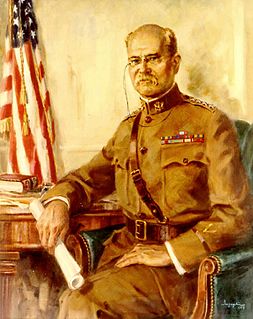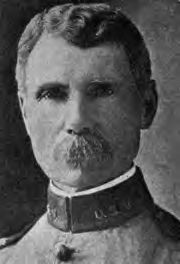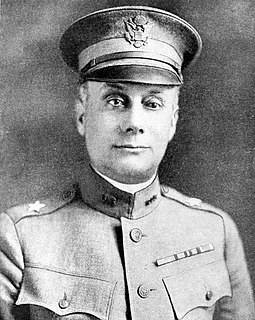| Sixth Army Corps | |
|---|---|
| Active | (never organized) |
| Country | United States |
| Branch | Regular Army |
| Type | Corps |
| Engagements | Spanish–American War |
The Sixth Army Corps was a unit of the United States Army authorized during the Spanish–American War, but which was never organized. After the declaration of war, General Order 36 of May 7, 1898 approved the organization of eight "army corps," each of which was to consist of three or more divisions of three brigades each. [1]

The United States Army (USA) is the land warfare service branch of the United States Armed Forces. It is one of the seven uniformed services of the United States, and is designated as the Army of the United States in the United States Constitution. As the oldest and most senior branch of the U.S. military in order of precedence, the modern U.S. Army has its roots in the Continental Army, which was formed to fight the American Revolutionary War (1775–1783)—before the United States of America was established as a country. After the Revolutionary War, the Congress of the Confederation created the United States Army on 3 June 1784 to replace the disbanded Continental Army. The United States Army considers itself descended from the Continental Army, and dates its institutional inception from the origin of that armed force in 1775.

The Spanish–American War was fought between the United States and Spain in 1898. Hostilities began in the aftermath of the internal explosion of USS Maine in Havana harbor in Cuba, leading to U.S. intervention in the Cuban War of Independence. U.S. acquisition of Spain's Pacific possessions led to its involvement in the Philippine Revolution and ultimately in the Philippine–American War.
General Order 46 of May 16, 1898 assigned commanding officers and training camps to the new corps. Major General James H. Wilson was designated commander, with the corps to assemble at Camp Thomas, Georgia. For reasons that cannot be immediately determined—but which may have stemmed from the near-collapse of organization at Camp Thomas, which was also the mustering point for the First and Third corps—the Sixth Corps was never organized and Wilson was transferred to command of the First Division in the First Army Corps. [2]

James Harrison Wilson was a United States Army topographic engineer and a Union Army Major General in the American Civil War. He served as an aide to Maj. Gen. George B. McClellan during the Maryland Campaign before joining Maj. Gen. Ulysses S. Grant's army in the Western Theater, where he was promoted to brigadier general. In 1864, he transferred from engineering to the cavalry, where he displayed notable leadership in many engagements of the Overland Campaign, though his attempt to destroy Lee’s supply lines failed when he was routed by a much smaller force of Confederate irregulars.
Camp Thomas was a United States Regular Army training facility located in North Columbus, Ohio, during the American Civil War. It was primarily used to organize and train new infantry regiments for service in the Western Theater.
The First Army Corps was a unit of the United States Army raised for the Spanish–American War.








